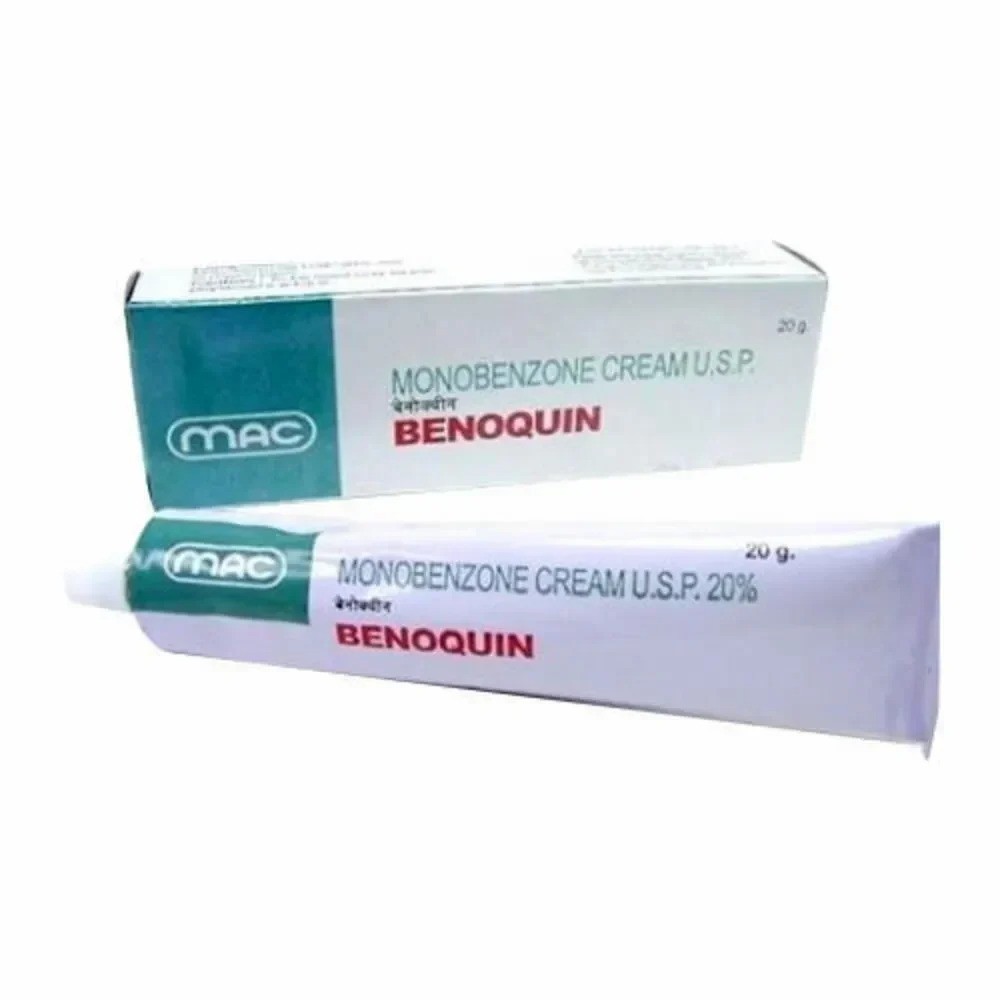Vitiligo, a condition characterized by patches of depigmented skin, can significantly impact one's confidence and self-esteem. However, with advancements in dermatological treatments, managing vitiligo has become more feasible. Benoquin Cream is one such treatment option that has gained attention for its effectiveness in addressing vitiligo. In this article, we delve into the uses, benefits, and potential side effects of Benoquin Cream, providing insights for those considering this treatment.
Introduction to Benoquin Cream
Benoquin Cream, also known as Monobenzone, is a topical depigmenting agent used primarily for treating vitiligo. Vitiligo is a chronic skin condition characterized by the loss of pigment in patches of skin, resulting in irregular white spots or patches. These patches occur when melanocytes, the cells responsible for producing melanin, die or stop functioning.
Understanding Vitiligo
Vitiligo affects people of all ages and ethnicities, and its exact cause remains unknown. However, several factors, including genetics, autoimmune disorders, and environmental triggers, are believed to contribute to its development. Vitiligo is not contagious or life-threatening, but it can have significant psychological and emotional effects, impacting self-esteem and quality of life.
How Benoquin Cream Works
Benoquin Cream works by reducing the production of melanin in the skin. The active ingredient, Monobenzone, inhibits the activity of tyrosinase, an enzyme involved in melanin synthesis. By decreasing melanin production in the depigmented areas, Benoquin Cream helps achieve uniform skin tone.
Uses of Benoquin Cream
Treating Vitiligo
Benoquin Cream is primarily used for repigmenting depigmented areas of the skin in individuals with vitiligo. It is most effective when applied to areas with limited or no pigmentation, such as the face, hands, and feet.
Cosmetic Purposes
In addition to treating vitiligo, Benoquin Cream is sometimes used for cosmetic purposes, such as skin lightening or depigmentation. However, it's essential to use this medication under medical supervision to avoid adverse effects.
Benefits of Benoquin Cream
Effective Skin Depigmentation
Benoquin Cream is known for its efficacy in achieving uniform skin tone by depigmenting areas affected by vitiligo. With consistent use, many individuals experience significant improvement in the appearance of depigmented patches.
Boosts Confidence
By restoring pigmentation to depigmented areas, Benoquin Cream can boost confidence and improve the quality of life for individuals living with vitiligo. Achieving more uniform skin tone can alleviate the psychological impact of the condition, enhancing self-esteem and self-image.
Side Effects of Benoquin Cream
While Benoquin Cream can be effective for treating vitiligo, it may cause side effects in some individuals. Common side effects include:
Skin Irritation
Some users may experience skin irritation, such as redness, itching, or burning, at the application site. This typically resolves with continued use or by adjusting the frequency of application.
Hypopigmentation
In rare cases, Benoquin Cream may cause hypopigmentation, where the treated areas become lighter than the surrounding skin. This effect is more likely to occur in individuals with darker skin tones.
Allergic Reactions
Allergic reactions to Benoquin Cream are rare but can occur. Symptoms of an allergic reaction may include rash, swelling, or difficulty breathing. It's essential to seek medical attention if you experience any allergic symptoms.
Precautions Before Using Benoquin Cream
Before using Benoquin Cream, it's crucial to take certain precautions to minimize the risk of side effects:
Consultation with a Dermatologist
Before starting treatment with Benoquin Cream, consult a dermatologist to determine if it's the right option for you. A dermatologist can evaluate your skin condition, medical history, and treatment goals to develop a personalized treatment plan.
Patch Test
Perform a patch test before using Benoquin Cream to check for any adverse reactions. Apply a small amount of the cream to a small area of skin and monitor for any signs of irritation or allergic reaction.
Avoiding Sun Exposure
Benoquin Cream can increase sensitivity to sunlight, making the skin more prone to sunburn. To protect your skin, avoid prolonged sun exposure and use sunscreen with a high SPF when outdoors.
How to Use Benoquin Cream Effectively
To maximize the benefits of Benoquin Cream and minimize the risk of side effects, follow these tips for effective use:
Proper Application Techniques
Apply Benoquin Cream thinly and evenly to the affected areas of skin, avoiding contact with unaffected areas. Gently massage the cream into the skin until fully absorbed.
Frequency of Use
Use Benoquin Cream as directed by your dermatologist. Typically, it is applied once or twice daily, depending on the severity of the vitiligo and your skin's response to treatment.
Duration of Treatment
Continue using Benoquin Cream as prescribed by your dermatologist, even if you start to see improvement in your skin. Treatment duration may vary depending on individual response and the extent of depigmentation.
Alternatives to Benoquin Cream
While Benoquin Cream is a commonly prescribed treatment for vitiligo, there are alternative options available, including:
Other Vitiligo Treatments
Phototherapy, corticosteroid creams, and topical calcineurin inhibitors are among the alternative treatments for vitiligo. Your dermatologist can help determine the most suitable treatment based on your specific needs and preferences.
Cosmetic Camouflage
Cosmetic camouflage products, such as makeup or self-tanners, can help conceal depigmented areas of skin temporarily. While these products do not treat vitiligo, they can provide a temporary solution for individuals seeking to camouflage the affected areas.
Real User Experiences with Benoquin Cream
Real user experiences with Benoquin Cream vary, with some individuals reporting positive results and others encountering challenges. It's essential to consider the following factors when assessing user experiences:
Severity of Vitiligo: The effectiveness of Benoquin Cream may vary depending on the extent and severity of vitiligo. Individuals with milder cases of vitiligo may experience better results compared to those with more extensive depigmentation.
Consistency of Use: Consistent application of Benoquin Cream as prescribed by a dermatologist is key to achieving optimal results. Users who adhere to the recommended treatment regimen are more likely to see improvement in their skin tone over time.
Skin Sensitivity: Individuals with sensitive skin may be more prone to experiencing side effects such as irritation or allergic reactions. Performing a patch test before starting treatment can help identify any potential sensitivity to the cream.
Individual Response: Like any medication, individual response to Benoquin Cream can vary. Some users may experience significant repigmentation and improvement in their skin tone, while others may see minimal changes or encounter adverse effects.
Conclusion
Benoquin Cream offers a promising treatment option for individuals with vitiligo seeking to restore pigmentation to depigmented areas of the skin. With its ability to effectively depigment the skin and boost confidence, Benoquin Cream has become a valuable tool in the management of vitiligo. However, it's essential to use this medication under the guidance of a dermatologist to minimize the risk of side effects and ensure optimal results.








